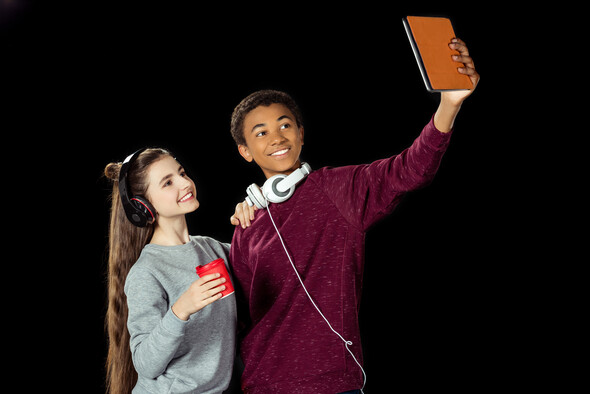A Teens Guide to Social Media Safety
Parents can worry about a lot. Like everything else in this world, social media safety is something that the adults in your life will be wanting to discuss with you. After all, they get nervous about their teens and younger kids on social media. It’s like a doorway in the house to the entire world where people can come and go as they please.
(This article is for teens. Parents, read about your role in social media safety for teens).
There are many different reasons why social media can be a dangerous playground. While the horror stories all focus on kids being lured or abducted, there are far more threats that are less severe. No matter your age or sex, it is important to follow some important rules for social media safety.
Before you roll your eyes, please know these guidelines exist to protect you! It’s not about telling you what you can and can’t do… it’s about empowering you as an individual to protect you from being ripped off, bullied, disrespected, scammed, or worse while you’re just trying to have a good time online.
Check Your Social Media Privacy Settings
The best place to start to ensure social media safety is to check the privacy settings of any social media network you are using. In most cases, the default privacy settings will give your posts the most public exposure which can be very dangerous.
Privacy Settings Instructions for Popular Social Media sites:
Why Privacy Has Never Been More Important
If you’ve never checked or updated your privacy settings, then people you don’t even know can see your posts. Even if you think you are being careful about what you post, it’s common for teens to post sensitive information without even realizing it. It could be something as simple as an identifying background in one of your pictures… but online predators find easy prey in public profiles.
In a nutshell, keep your social profile strictly private… the best settings are where only friends can see what you post because you never really know who your friends are friends with online, so the “Friends of Friends” setting can leave you exposed and vulnerable.
But it’s not just cyberbullies, trolls and predictors that are on social media looking for trouble. Cybercriminals and scammers that use information from social media profiles to commit identify theft or send you phishing or smishing (text) messages.
Consider Peer Pressure
Decide how much you really want to be on social media. Some people love it. Other people would rather interact with friends offline. Some platforms are more addictive than others and more harmful in other ways as well, such as how social media can effect a person’s image of themselves and their overall well being.
Talk to your parents or a school counselor about how they may be able to help you fight peer pressure to join social media in the first place. It’s ok to not have a special media profile at all or limit yourself to one or two of your favorites.
Be Cautious of Friend Requests
Sure, it’s great to connect with new people through social people… but isn’t there something suspicious when a complete stranger sends you a friend request?
Play it safe and only accept friend requests from friends in the real world.
Apart from the obvious (more severe) threats… friend requests from strangers can often turn out to be spam bots (meaning you’ll be spamming your friends). Fake profiles are also created for cyber bullying. So when a new friend request comes in, and you think you know the person, be sure to check their profile first and see if anything looks fishy.
Think Before You Post!

Your social media safety is directly related to the personal information you allow others to see. Limit the contact information in your profile and posts. Never give away your phone number or address. Keep private information private. If you want to share this information with a friend, do it directly by phone or text.
Why It’s Important for Social Media Safety
Teenagers tend to have a reckless, impulsive approach to social media. (No offense.)
That’s why it’s important to think first before you post what you are thinking or feeling. Even though you can delete something (a post, picture, comment, etc.) you can never permanently erase something that has been published on the internet.
Social Media can effect teen girls especially because they are more apt to express their feelings, while opening the door to receive feedback about themselves. Unfortunately, these interactions are not always positive. Teen boys tend to use social media to communicate on lighter subjects, such as jokes and entertainment. In either case, it’s important to reserve very private and personal emotions to friends in person.
More Tips for Online Safety:
- Avoid using location services like Foursquare and disable location services on Facebook, Instagram, Twitter, etc. when posting photos. It’s cool, sure… but it’s not necessary and the risk is greater than the reward.
- Avoid posting that you are going on vacation, or posting pictures while on vacation… until you are back home. Be also aware of the ramifications of using your cell phone at school and discuss responsible behavior within school guidelines.
- If you do meet somebody new online, never agree to meet them off line. If somebody you met online sends or requests provocative pictures, tell an adult. You have to approach online friends (who you don’t know in the real world) as a potential predator… because even if it feels like you know them; you really don’t know who they are.
Read more about Social Media Safety for kids of all ages:






 Explore the Safe Search Engine -
Explore the Safe Search Engine -